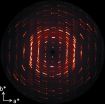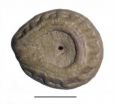(Press-News.org) Active pharmaceutical ingredient (API), is the term used to refer to the biologically active component of a drug product (e.g. tablet, capsule). Drug products are usually composed of several components. The aforementioned API is the primary ingredient. Other ingredients are commonly known as "excipients" and these substances are always required to be biologically safe, often making up a variable fraction of the drug product. The procedure for optimizing and compositing this mixture of components used in the drug is known as "formulation". For example, if the API is a solid and the drug is required to have a liquid dosage form, such as a cough syrup, then the excipients would be the liquids that are used to formulate the syrup. The design criteria for any small molecule API is usually a combination of several factors that goes beyond the intended therapeutic effect, and usually heavily encompasses both pharmacokinetic and pharmacodynamic considerations, so for this reason, API molecules have many chemical functional groups.
The API form that is used in a formulation is often the most thermodynamically stable crystalline form. As such, the phenomenon of hydrogen bonding in combination with there being many functional groups on the API usually results in the available crystalline form being a hydrate.
Because of this fact the hydration behavior of crystalline APIs is of particularly high importance within the pharmaceutical industry, and is vastly studied from every possible angle. The state of hydration has a direct effect on the physical properties of the API, which in turn has a large impact on the drug processability and how the drug will eventually perform in-vivo, i.e. stability, solubility, and bioavailability.
Recently, a team of scientists in the department of Drug Product Science and Technology, at Bristol-Myers Squibb, USA have developed a supplementary technique to complement more conventional analysis (methods such as calorimetric studies, nuclear magnetic resonance and vibrational spectroscopy) to study the behavior of hydration in organic crystalline solids.
By performing single crystal X-ray diffraction experiments with the ultimate objective being interpretation of the non-Bragg diffraction features, Chan et al, Acta Cryst. (2014). B70, 555-567. doi:10.1107/S2052520614005125 were able to gain further insight into the mechanical and structural details of the dehydration of the crystal. These scattering features were reproduced and studied using computer models and the results were able to show the mechanistic relationships between changes in the lattice structure as stages of the overall drying process.
This study is the first of its kind to combine the mechanism of dehydration and non-Bragg scattering features from a single API crystal and the results will further improve the knowledge, formulation and choice of API used in drug manufacture today. The group at BMS anticipates that these same data interpretation techniques will be useful to other researchers and that a more user friendly modeling software can be made available in the future.
INFORMATION: END
Understanding active pharmaceutical ingredients
2014-06-05
ELSE PRESS RELEASES FROM THIS DATE:
Bloodstream infections reduced through better central line care at three hospitals
2014-06-05
Anaheim, Calif., June 5, 2014 – Whether through the use of alcohol-containing caps or basic cleaning of the injection port of the central line, infection preventionists at three hospitals are finding successful ways to stop germs from entering central line catheters and causing bloodstream infections in patients.
A trio of abstracts, to be presented on June 7 at the 41st Annual Conference of the Association for Professionals in Infection Control and Epidemiology (APIC), addresses the challenge of keeping bacteria from entering the bloodstream through a central line, a ...
Molecular self-assembly scales up from nanometers to millimeters
2014-06-05
To ensure the survival of Moore's law and the success of the nanoelectronics industry, alternative patterning techniques that offer advantages beyond conventional top-down patterning are aggressively being explored.
Can self-assembly based technologies offer advantages beyond conventional top-down lithography approaches?
A joint effort of the Aalto University of Helsinki, the Politecnico di Milano, and VTT Technical Research Centre of Finland has now demonstrated that it is possible to align molecular self-assemblies from nanometers to millimeters without the intervention ...
Northern Ireland Assembly to receive policy recommendations
2014-06-05
YOUNG people from disadvantaged communities in Northern Ireland should be provided with "safe spaces" in which to protest and make their views known. This would help prevent them falling under the sway of extremists, argue researchers at the University of Huddersfield who played a major role in organising a conference in Belfast that investigated the "culture wars" of Ulster.
One of the key themes to emerge was that many working-class communities felt they had gained little from the province's "peace dividend", with jobs hard to find and segregation still common. As a ...
Doing more means changing less when it comes to gene response, new study shows
2014-06-05
Turku, FI – An international team led by scientists at the University of Turku in Finland studied thermally-adapted fish populations to discover that the more biological functions a gene has, the less it responds to environmental change. "In addition to having important implications for climate change adaptation, these findings could radically change the way we study gene responses to any external stimulus like for example to drug treatments", the authors suggest. Their findings are reported on June 3 2014 in the journal Nature Communications.
When organisms need more ...
A sand-dwelling new species of the moonseed plant genus Cissampelos from the Americas
2014-06-05
Researchers from the Missouri Botanical Garden have discovered in dry forests and transient sand dunes in Bolivia and Paraguay, a new plant species in the moonseed family Menispermaceae. The discovery was reported in the open access journal PhytoKeys.
The new species was described in the genus Cissampelos, which includes vining species that for the most part are found in disturbed habitats of the tropical and subtropical regions of the World.
This new Cissampelos is morphologically unique by its small leaves, its 8 anther-cells in the male flowers, and a large endocarp–a ...
Scientists discover the basis of allergic reactions
2014-06-05
Allergies in humans and animals are on the increase. An allergic reaction may cause unpleasant symptoms like hay fever, food intolerance or skin rashes. Allergic reactions may also cause acute and life-threatening symptoms, such as asthma or anaphylactic shock.
A single pollen protein is responsible for allergies
One of the most well known allergens, i.e. substances that cause allergies, is so-called "Bet v 1" from birch pollen (Betula verrucosa). The protein was first produced artificially in the laboratory 25 years ago in Vienna, and is being used as an allergen ...
Shorter TB treatment regimens will reduce cost for patients and their families
2014-06-05
Shorter TB treatment regimens will reduce the out-of-pocket expenses incurred by both patients and their family members, who often act as the patients' guardians. In addition, shorter TB regimens may allow an earlier return to productive activities for patients and their families.
These conclusions come from an international alliance of researchers, led by the Liverpool School of Tropical Medicine (LSTM), who carried out a comparative study in Tanzania and Bangladesh looking at the out-of-pocket costs incurred by TB patients in both countries. These patients were taking ...
App paired with sensor measures stress and delivers advice to cope in real time
2014-06-05
Computer scientists at Microsoft Research and the University of California, San Diego have developed a system that combines a mobile application and sensor to detect stress in parents and delivers research-based strategies to help decrease their stress during emotionally charged interactions with their children. The system was initially tested on a small group of parents of children with ADHD.
The system, called ParentGuardian, is the first to detect stress and present interventions in real-time—at the right time and in the right place. It combines a sensor worn on the ...
NIDA review summarizes research on marijuana's negative health effects
2014-06-05
The current state of science on the adverse health effects of marijuana use links the drug to several significant adverse effects including addiction, a review reports. The article, published today in the New England Journal of Medicine, is authored by scientists from the National Institute on Drug Abuse (NIDA), part of the National Institutes of Health.
The review describes the science establishing that marijuana can be addictive and that this risk for addiction increases for daily or young users. It also offers insights into research on the gateway theory indicating ...
Report supports shutdown of all high seas fisheries
2014-06-05
Fish and aquatic life living in the high seas are more valuable as a carbon sink than as food and should be better protected, according to research from the University of British Columbia.
The study found fish and aquatic life remove 1.5 billion tonnes of carbon dioxide from the atmosphere every year, a service valued at about $148 billion US. This dwarfs the $16 billion US paid for 10 million tonnes of fish caught on the high seas annually.
"Countries around the world are struggling to find cost effective ways to reduce their carbon emissions," says Rashid Sumaila, ...


